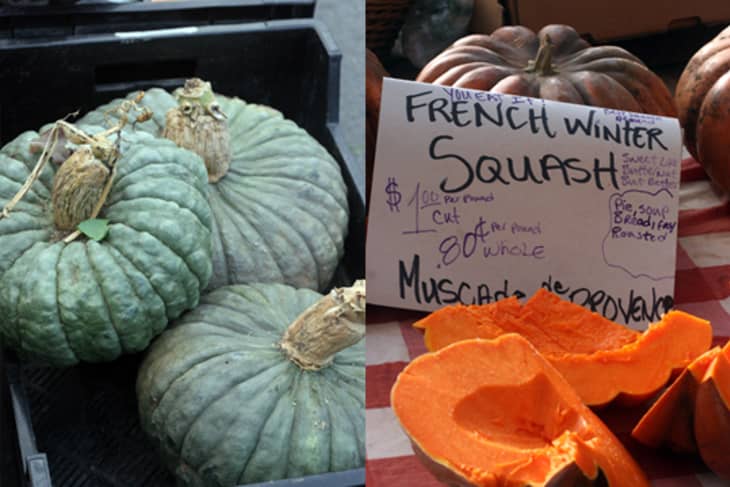Making the Most of Squash
It’s winter, which means there’s a lot of squash in the markets right now. Big ones. People have been writing in and asking us what they can do with all these squashes. They can be a little intimidating. They get big. There are squashes in so many shapes, colors, and textures. They have names like Hubbard, Lakota, Hokkaido, and Marina di Chioggia. Some are sweeter and some are nuttier. Well, we’re here to help you with storage tips, preparation, and recipes. Read on …
A good squash must have been left on the vine to ripe fully so that the sugars develop. Many growers rush their squashes to market too early to take advantage of Halloween, but October is too early to harvest squash. It’s best to start buying winter squashes after November. The rind should have no soft spots, cracks, or blemishes. The stem should be thick. The squash should feel heavy for its size – if you see two squashes of similar size, pick the heaviest one.
Winter squashes are cured after they are harvested. This helps them to dry out a bit and convert any extra starches into sugar. If stored in a cool, dry place, like a basement, they will keep for months at temperatures of 50 to 60 degrees F. Don’t store squashes near apples or pears; the ethylene gas given off by these fruits will spoil the squashes. Don’t put them on plastic or paper as these trap moisture, and don’t put them on concrete floors. Slotted shelves are best; they provide air circulation. If you don’t want to deal with cutting a large, thick-skinned squash, bake the squash at 375 degrees for 20 to 30 minutes. Let it cool, and then cut it and scoop out the seeds. To estimate serving size, a general rule of thumb is 1/3 pounds per person.
All varieties of winter squash can be pureed, steamed, roasted, and baked. Squash can be used in soups, baked in breads or pies. Squashes can be stuffed with bread, rice, or meat. They can be pickled, and the puree can replace tomato sauce on a pizza.
Recipes:
Recipe: Pasta with Butternut Squash, Sage, and Pine Nuts
Recipe: Penne with Acorn Squash and Pancetta
Recipe: Roasted Butternut Squash Puree with Goat Cheese
Risotto with Squash and Sage
Eat This: Baked Acorn Squash Rings
Five Uses for Pumpkin Seeds
Good Tip: Brining Pumpkin Seeds
Recipe: Pumpkin Tortilla Soup
Related:
How To Peel Squash: An Easier Way
Farmers’ Market Report: Tahitian Squash
Seasonal Spotlight: Delicata Squash
Japanese Style Simmered Sweet Kabocha
Look! Heirloom Pumpkins At Whole Foods
(Image: Kathryn Hill)
